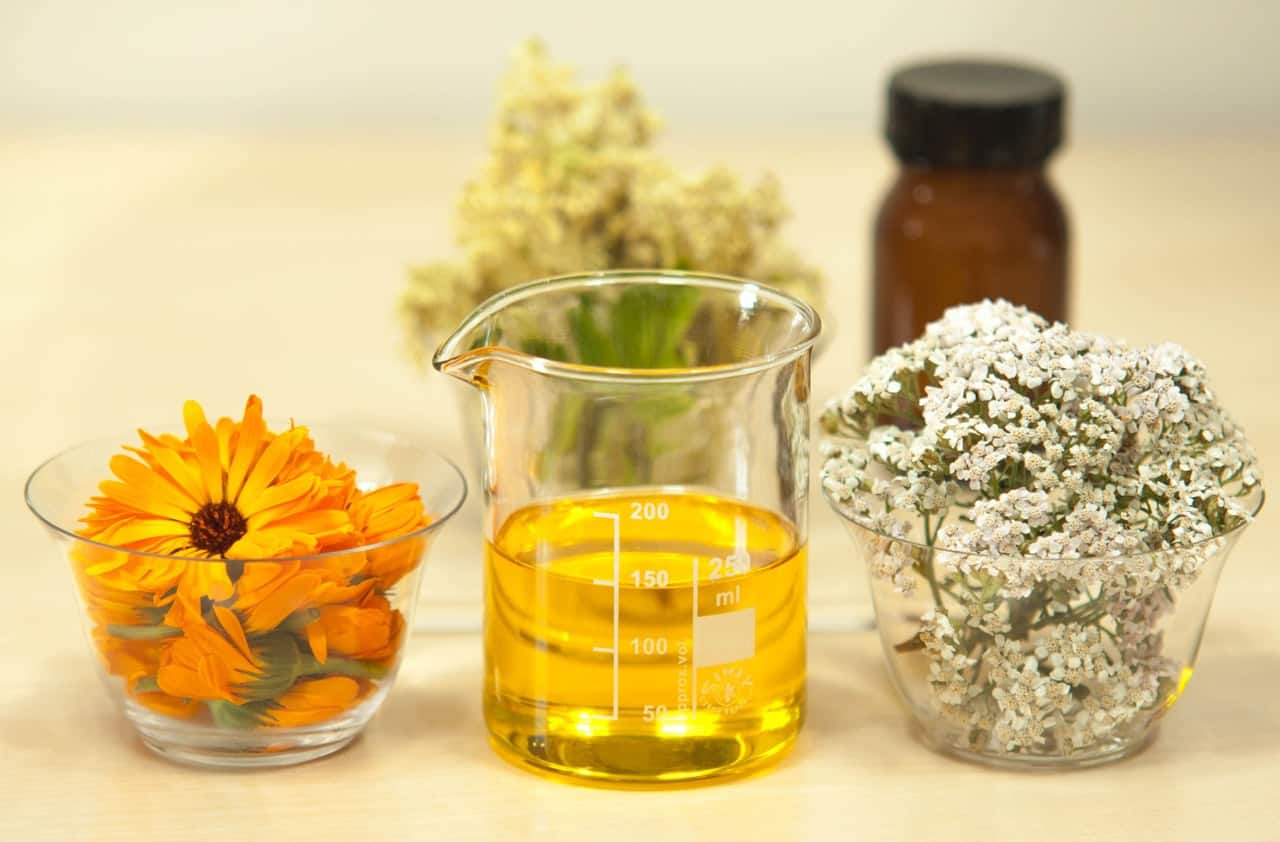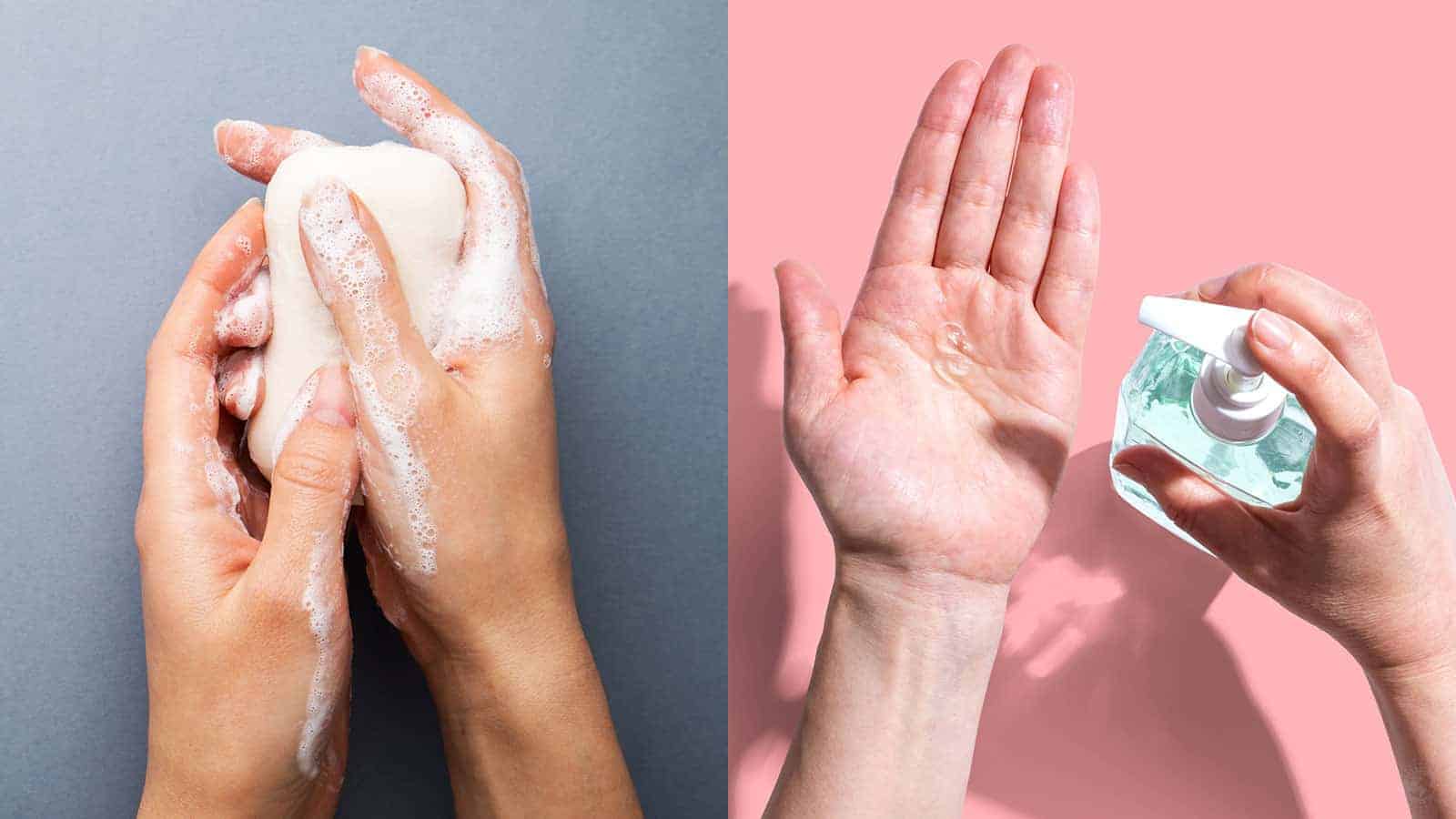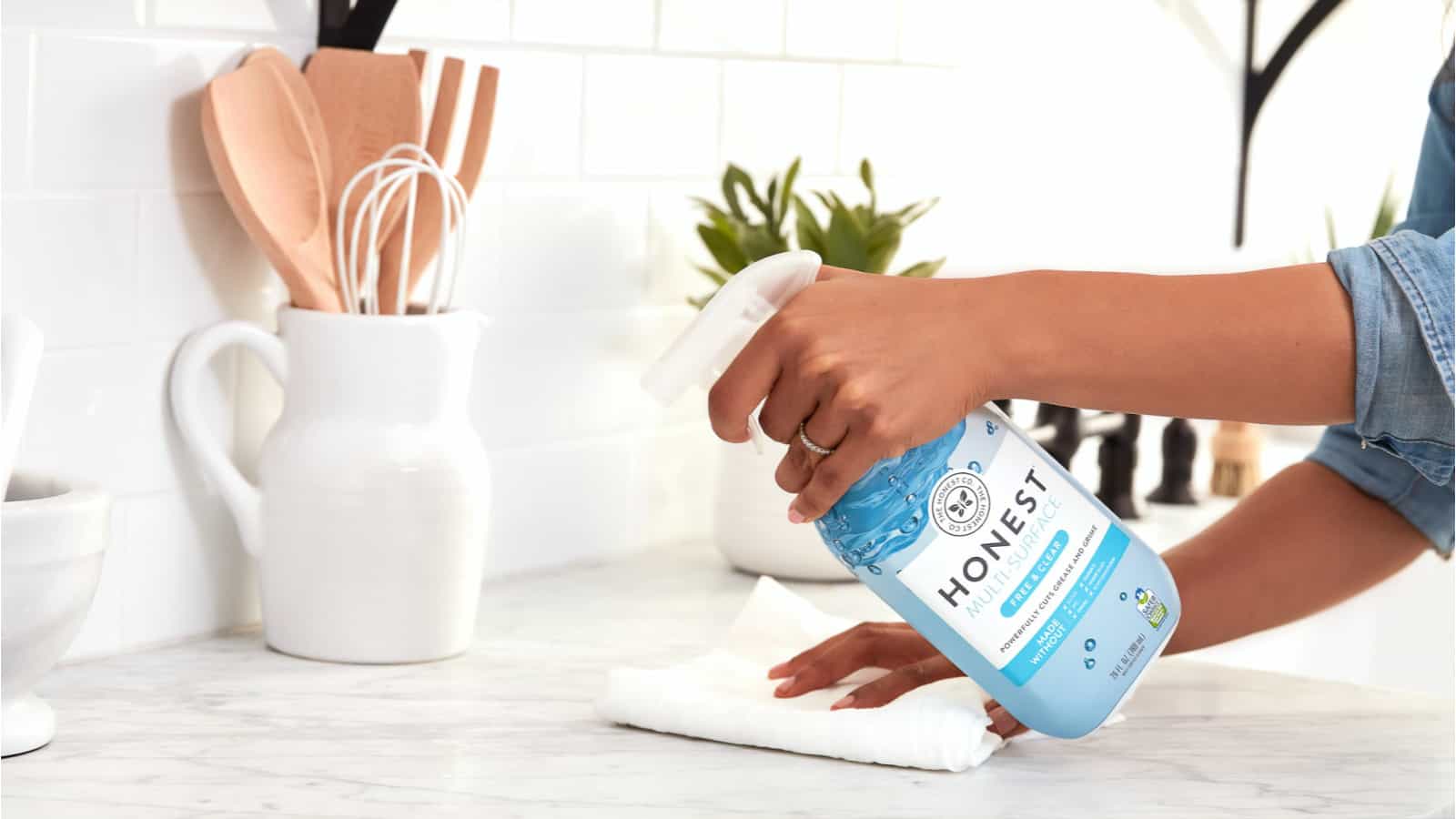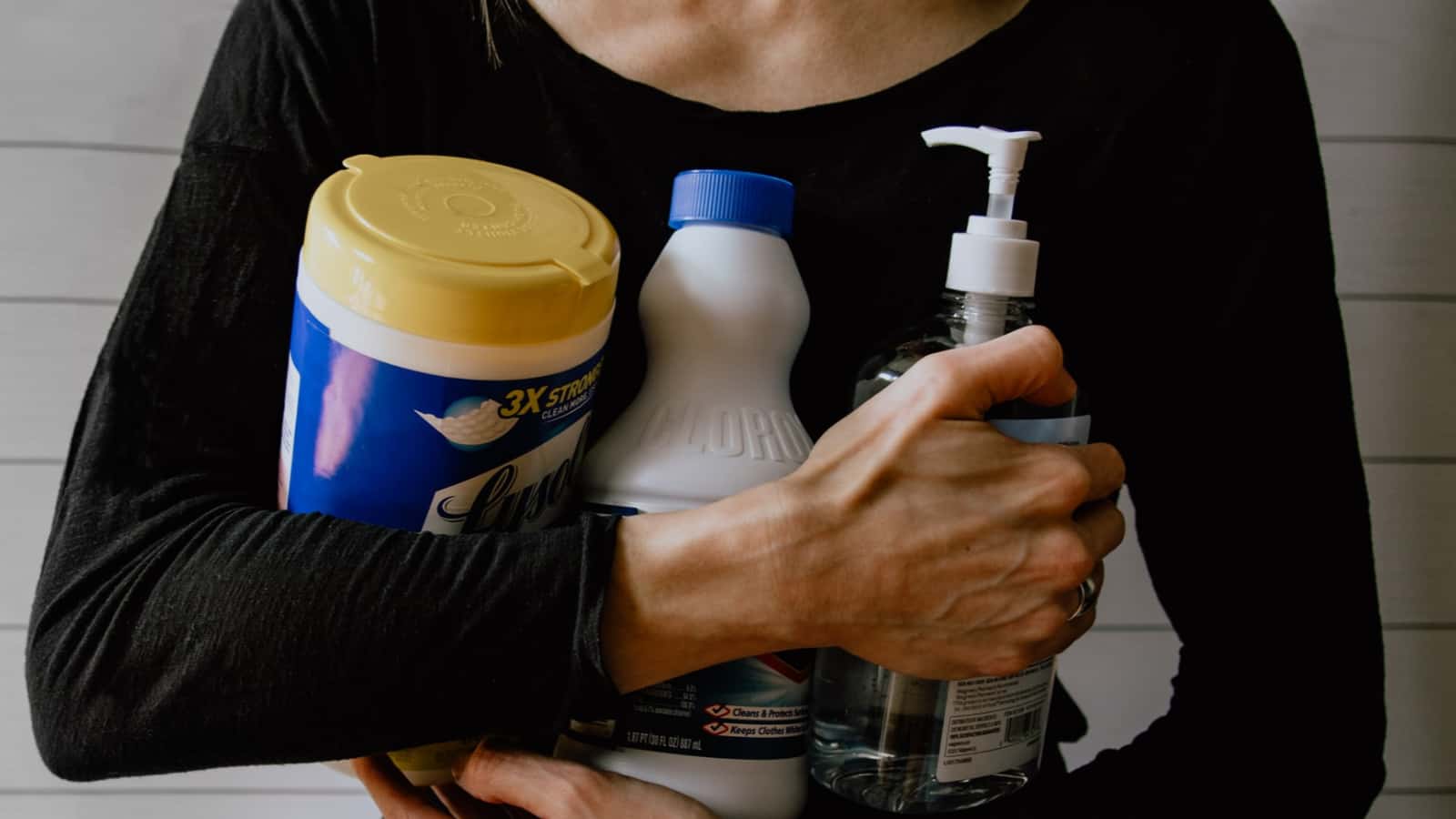When you’re cleaning your house, it can be tempting to mix cleaning products to maximize their effectiveness or try killing two birds with one stone. Chances are, though, that your actions will not have positive results – and the results might even harm you.
Cleaning products are packed with complex chemicals that can react with other complex chemicals to produce dangerous or toxic gases. At best, some of these bad reactions will damage the thing you’re trying to clean. At worst, they’ll poison you and those in your home. Here are 20 cleaning products to never mix together.
Never Mix These 20 Cleaning Products
Mixing these chemicals poses extreme danger.
1. Ammonia and Bleach
Ammonia is commonly found in many window and glass cleaners. This is because ammonia is an incredibly powerful cleaning substance, and greatly enhances the effectiveness of just about any cleaning product.
When mixed with bleach, however, it creates chloramine gas. This gas can cause the following symptoms:
- Chest pain and shortness of breath
- Irritation to the eyes, nose, and throat
- Nausea and watery eyes
2. Detergent and Disinfectants
Sometimes, desperation moves our hand to try combinations that seem to be the potential answer. For example, detergents and disinfectants should create a positive result, right?
Unfortunately, most market-based disinfectants use ammonia, which can react badly with most detergents and create all sorts of toxic vapors. Instead, you should try the following:
- Create a soapy solution with detergent and warm water
- Apply the solution directly onto the desired area
- If all else fails, hire cleaning experts for help
3. Bleach and Oven Cleaner
Bleach is known to be a powerful cleanser, but it really should be used on its own. This is because it’s main ingredients – the secret behind its effectiveness – can have disastrous chemical reactions with other off-the-shelf cleaners, such as oven cleaners.
Mixing the two together can create chlorine gas, which can cause the following symptoms:
- Nausea and vomiting
- Breathing difficulties
- Blurred eyes
4. Bleach and Vinegar
Like bleach and oven cleaners, mixing bleach and vinegar also produces chlorine gas. This is because vinegar is an acid – when an acid comes into contact with bleach, it will create chlorine gas.
Even at low levels, chlorine gas is perfectly capable of causing:
- Burning
- Shortness of breath
- Skin irritation
5. Bleach and Drain Cleaner
No matter how much positive thinking tells you otherwise, this would result in something highly effective, drain cleaners and bleach do not mix. In reality, they combine to create chlorine gas – which is dangerous and corrosive.
If exposed to it in any way, the CDC recommends the following:
- Move away from the chlorine gas if outdoors
- Move to higher ground if indoors, as chlorine gas sinks
- Remove the clothes quickly. Do not pull them over your head – cut them up instead
- Seal the clothes in two layers of plastic bags to protect others and yourself
- Inform health and safety personnel
- Wash thoroughly with large amounts of soap and water
6. Bleach and Rubbing Alcohol
Chloroform is infamous for being used in movies to knock someone out. In reality, you will need large amounts of chloroform to make someone pass out – but any amount created by mixing bleach and rubbing alcohol together will still be a problem.
Here are some of the things associated with chloroform:
- Accumulates as carcinogenic substances in the lungs
- Causes hepatic and renal damage
- Dizziness and drowsiness
- Nausea and vomiting
- Convulsions
7. Castile Soap and White Vinegar
On their own, castile soap and white vinegar are some of the best natural cleaning products you can get. Combining them won’t give you a net positive, however. Unfortunately, they are both alkali and acidic, respectively. As a result, they neutralize each other’s beneficial cleaning abilities and create useless white gunk.
Instead, consider using them one after the other – a vinegar wash should easily remove any remaining scum left behind by castile soap.
8. Baking Soda and Vinegar
Both baking soda and vinegar on their own are fantastic natural cleaners. Unfortunately, when combined, they simply become useless – here are some reasons why it is so:
- Both are acidic substances, so they do not create more extra cleaning power together
- When mixed, they simply form lots of water and some sodium acetate
- The resulting mixture will foam up and potentially explode
9. Mildew Remover and Bleach
When combined, mildew stain remover and bleach produce chlorine vapors – a dangerous and toxic gas. Here are some of the more acute symptoms of chlorine gas:
- Blisters, redness, and pain on exposed skin
- Eye, nose, and throat irritation
- Tissue damage
10. Bleach and Toilet Bowl Cleaner
You will have to use either bleach or toilet bowl cleaner – combining the two can otherwise create disastrous results. More specifically, it can create chlorine gas. Here are a few ways to identify chlorine gas should an accident occur:
- The gas itself takes on a yellow-green color
- The gas sinks to the bottom, as it is heavier than air
- There is a pungent and irritating odor, much like the scent of bleach
11. Two Different Kinds Of Drain Cleaners
Unless you’re willing to reach in physically and pull out whatever it is that’s clogging your pipes, you will normally reach for the drain cleaner. However, if the first round doesn’t work, the solution is not to pour in a different drain cleaner. You might create an explosion by accident!
Instead, you should do the following:
- Choose a product proven to work
- Ensure that you have followed the instructions correctly
- Be prepared to call the plumber should the product fail to work
12. Vinegar and Water – For Certain Floor Types!
Vinegar and water is a handy, natural cleaning solution that works for most floors. However, the acidic nature of vinegar can actually damage hardwood floors, dulling their otherwise beautiful appearance. Water can also cause warping and moisture damage to your hardwood floors if you’re not careful.
Instead, reserve your mixture for cleaning these types of floorings:
- Ceramic tiles
- Carpets with synthetic fibers
- Vinyl floors
13. Bleach and Glass Cleaner
The main ingredient in bleach is sodium hypochlorite, which interacts with ammonia to create toxic chloramine fumes. Unfortunately, most glass cleaners feature ammonia as their main cleaning ingredient.
As a result, mixing them with bleach is an idea fraught with danger – no matter how much positive thinking suggests that this combination might double their cleaning power.
Instead, consider keeping the following tips in mind for clean and streak-free windows:
- Invest in a good-quality squeegee
- Wipe down the squeegee regularly
- Replace the rubber blade of the squeegee when it gets dull
14. Hydrogen Peroxide and Vinegar
On their own, hydrogen peroxide and vinegar are two excellent cleaners. They can be used one after another to clean fruits and countertops, so long as each one is wiped clean before the next.
When mixed, however, the two create peracetic acid. This acid could be a decent cleaner in and of itself – if it weren’t so dangerous to use in most households without preparation.
At low concentrations, this acid is:
- Corrosive
- Potentially toxic
- Irritating to the eyes, skin, and upper respiratory tract
15. Bleach and Lysol
Lysol and bleach are, on their own, excellent cleaners and disinfectants. That does not mean that they can be combined for a more effective cleaning solution, however.
When mixed, bleach interacts and oxidizes the 2-benzyl-4-chlorophenol found in Lysol. This creates fumes that are corrosive and harmful to human health.
The potentially harmful effects of 2-benzyl-4-chlorophenol include:
- Toxic vapors
- Skin irritation
- Eye irritation
16. Bleach and Dish Detergent
Ammonia is a common ingredient in dish detergents. This substance can improve the effectiveness of dish detergents but will create chloramine gas when mixed with bleach.
Instead, consider doing the following for better cleaning effectiveness:
- Use warm or hot water
- Ensure that the detergent and water have been mixed together in appropriate amounts
- Soak dishes in the mixture for a while to loosen stubborn particles and stains
17. Bleach and Lemon Juice
When mixed with any kind of acid, bleach will produce chlorine gas. As a result, bleach reacts with lemon juice like any other cleaning product off the market and creates chlorine gas.
That said, lemon is a powerful thing to use on its own. Consider the following ideas:
- Putting lemon slices in vinegar to give it a fresh, citrusy smell
- Let the lemon juice sit on the affected area for a minute before wiping it clean
- Use the oils in lemon rinds to clean and shine items
18. Some Types Of Pesticides and Water
You might want to check the instructions on the label. Upon contact with water, some strong pesticides can create phosphine gas. This gas is colorless, flammable, and highly toxic.
Here are some of the effects of inhaling phosphine gas:
- Convulsions
- Irregular heartbeat
- Shock
- Coma
- Liver and kidney damage
19. Bleach And Most Cleaning Products
In general, most household cleaning products available on the market use ammonia. This allows them to be highly effective in removing dirt and grime. Unfortunately, when mixed with bleach, they will react and create chlorine gas.
Some examples of household cleaning products that will contain ammonia include:
- Wood cleaner
- Toilet cleaner
- Glass cleaner
- Floor cleaner
- Dishwasher detergent
20. Any Cleaning Products From Different Brands
A blog on https://abcopro.com.au says unless you take the time to examine every single ingredient on the list and cross-reference them with the ingredients in the cleaning products back home, you are always in danger of creating some deadly chemical reaction.
Instead, consider doing the following for your own safety:
- Stick to one brand only
- Use gentler alternatives
- Make natural and organic cleaning solutions
- Keep only one type of cleaning product for each purpose on hand
- Take your time to invest in a proven cleaning product
Final Thoughts On Some Cleaning Products To Never Mix Together
Generally, you shouldn’t be mixing products together without understanding them. Each cleaning product is designed for a specific use, and using them one by one may take longer, but it is much safer. It’s better to be inconvenienced than ill or dead, after all!
If you need fewer products, opt for multi-purpose cleaners that cover a wide range of different functions. This way, you can use a single product for multiple items without harming yourself or others.



















